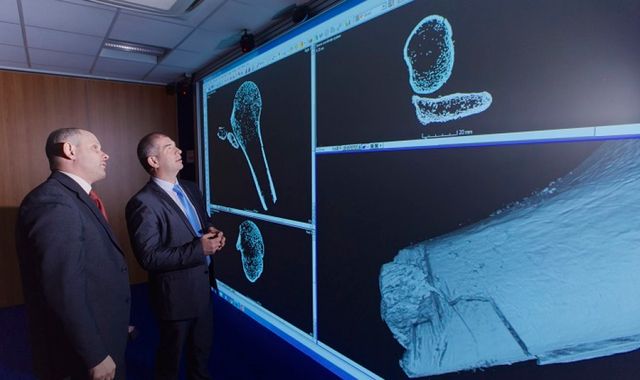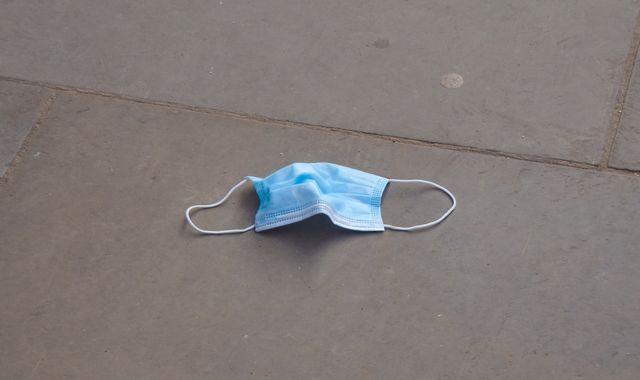To catch a killer: How 3D printing and digital scans are helping police solve cases
Written by News on 10/09/2019
Keeping ahead of criminals, especially in murder cases, is an ongoing challenge for homicide detectives, forensic scientists and clinicians.


The latest technology in digital scanning and 3D printing is providing vital clues and evidence in murder cases.
Post-mortems provide crucial information on the cause of death and CT scanning in hospitals can provide evidence.
But the latest scans by the Centre For Imaging, Metrology, and Additive Technology at the University of Warwick are 100% more detailed, detecting very small injuries that would be missed by conventional equipment.
The team can also produce 3D renderings of injuries, even the so-called “micro-injuries” not detected by conventional scanners, and the age of the injuries can also be determined, which assists pathologists in determining whether they were a consequence of the incident in question.
This evidence is used in trials to visualise trauma to the jury and support the pathologist’s testimony.
Sky News was given a tour of the latest equipment used at the centre by leader Professor Mark Williams and Detective Chief Superintendent Mark Payne, who heads homicide investigation for West Midlands Police.
Prof Williams is spearheading a new field of digital forensic pathology and the centre has secured funding from the force, enabling them to carry out this vital work.
Police forces throughout the country have already benefited from this technology, with over 100 homicide cases from 13 forces supported by forensic evidence identified by the centre. Causes such as stabbing, bone fractures and strangulation have all been investigated.
Prof Williams explained how micro-CT equipment and analysis was used to find evidence in the case the death of nine-week-old Teri-Rae Palmer, whose mother Abigail Palmer was found guilty of manslaughter and wounding and sentenced to 13-and-a-half years in jail.
He told Sky News: “3D x-ray scanners allowed us to identify multiple fractures to Teri-Rae’s ribs that had occurred over an extended period of time.
“The ability to produce highly detailed 3D images of these shocking injuries that could be presented at court helped establish the truth and show what had happened.
“It’s an honour for us to provide critical evidence in cases like this, and to be able to help the police investigate such an unfortunate tragedy.”
Research is already underway to advance the types of investigations carried out at the centre.
Michelle Painter, head of forensics services for West Midlands Police, told Sky News: “We will soon be finalising further research projects, including scanning fingerprint and footwear marks, and assessing damaged digital devices for protected data sources.
“The research and partnership possibilities are endless and exciting.”
Detective Superintendent Payne added: “It’s a fantastic development in the field of forensics and, as we’ve proved in the few cases to date, can be crucial in helping us uncover the truth behind some of our most serious crimes.”
The team have worked on murder cases identifying who was responsible for the death in instances where more than one person was involved.
In one case in which a hammer and a spanner were used as weapons, both assailants claimed innocence and work from the CT scans helped show both were guilty.
Scientists, engineers and police scanned charcoal from a bonfire and found the humerus – a long bone in the arm that runs from the shoulder to the elbow – from a murder victim embedded within.
The rest of the body was found in a suitcase, but the bonfire finding helped link the defendants’ house to the crime and was crucial in the ensuing guilty verdict.
Scanners were also used to make replicas of the famous dodo at the Oxford University Natural History Museum. During this investigation, they discovered the animal had been shot, with lead found throughout the skull.
The British Sugar Guild even asked Prof Williams for help replicating the Queen’s wedding cake for her birthday.
Future work will also concentrate on industrial forensics, including aeroplane and car failures, through to developing implants for human medicine such as hip implants.
The new facility was presented at the British Science Festival organised by the British Science Association at the University of Warwick.
(c) Sky News 2019: To catch a killer: How 3D printing and digital scans are helping police solve cases







